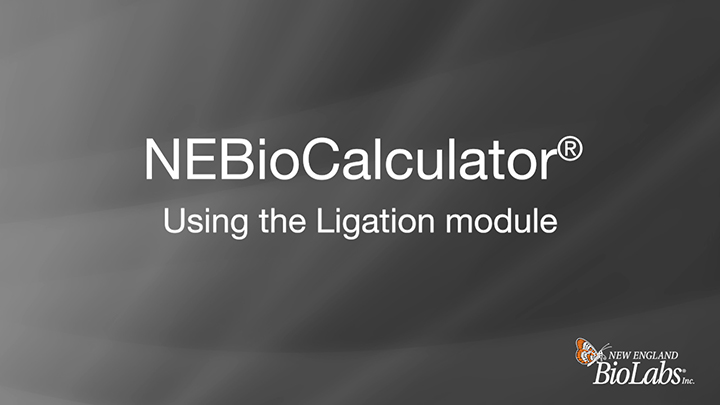Ligation protocol using SplintR® Ligase (NEB #M0375)
Annealed nicked substrates are suitable for ligation by SplintR Ligase. During development of the product we used an acceptor DNA oligonucleotide, a 5'-phosphorylated, 3'- 6-carboxyfluorescein (FAM)-labeled DNA donor oligonucleotide, and an RNA splint of complementary sequence. Individual oligonucleotides were purchased from a commercial DNA synthesis vendor with the required modifications and in HPLC-purified form. The oligos were resuspended in milli-Q H2O to a concentration of 100 µM and diluted as needed. The FAM-labeled DNA donor (10 µM) was combined with 1.1 molar equivalents each of the DNA acceptor and the DNA or RNA splint in oligonucleotide annealing buffer. This mixture was heated to 85°C for 2 minutes and allowed to cool slowly in a heat block to room temperature over 3 hours. Annealed DNA/RNA hybrid stocks (10 µM in the FAM-labeled fragment) can be used immediately for a ligation reaction or, alternatively, can be stored at −20°C. Working stocks were prepared by diluting the substrates to 1 µM.
Step 2: SplintR Ligation Assay
- Reactions can be performed in typical plasticware (microfuge tubes, PCR plates, etc).
- Thaw reagents and keep on ice.
- Add components to a final volume appropriate for downstream steps (20 µl for this example):
H2O 15 µl 10X Reaction Buffer 2 µl Substrate (1 µM) 2 µl SplintR Ligase 1 µl (25U)
Total 20 µl
Note: In this example the substrate is present at 100 nM, and ligase at 500 nM. We recommend a starting concentration of SplintR around 2-fold excess over ligatable ends. See the product datacard or website for more detailed guidance on reaction conditions, diluents, etc.
- Incubate for 15-60 minutes at 25°C.
- Stop reaction using either heat inactivation at 65°C or other method appropriate for downstream
steps such as quenching with EDTA.
- Keep reaction on ice until needed (hrs) or store at -20°C.


